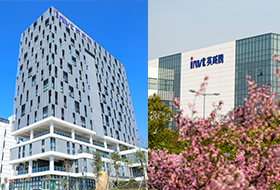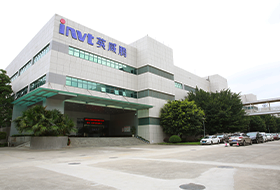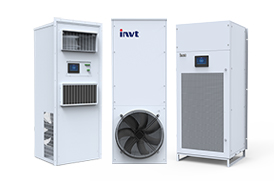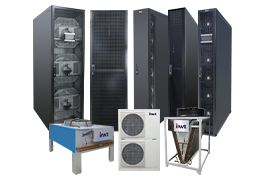How to take a Modular Approach to solving Data Center Market challenges
Data centers need to address these and other challenges to remain competitive and meet sustainability goals while still delivering the flexibility, scalability, and service quality that customers expect. The solution may therefore lie in adopting a modular approach to designing, building, and operating data centers.
Data centers are now widely used to provide services in most areas of people's work and life.
However, the shift to cloud computing, the continued adoption of internet-connected devices, and the increasing popularity of technologies such as artificial intelligence (AI) means that there is a growing need for data storage and processing.
Data center operators have no choice but to keep expanding capacity. This has implications for sustainability, given the large amounts of electricity required to run a data center, and the size of the carbon footprint it represents. This is certainly an area where data center operators are facing increasing regulatory pressure from governments around the world.
Data centers need to address these and other challenges to remain competitive and meet sustainability goals while still delivering the flexibility, scalability, and service quality that customers expect. The solution may therefore lie in adopting a modular approach to designing, building, and operating data centers.
Modular data centers are essentially a “plug and play” solution, prefabricated by experienced suppliers, so there is no need for qualified engineers to make repeated trips to the site.
It’s no surprise, then, that data center operators everywhere are seeking more sustainable practices to reduce the size of their carbon footprints.
Industrialization or modularization of data centers, in which prefabricated, pre-engineered, and pre-integrated units are delivered to the site, is a flexible, scalable approach to data center construction that enables data center operators to reduce cost, complexity, and construction time.
Modular data centers are essentially a “plug and play” solution, prefabricated by experienced suppliers, so there is no need for qualified engineers to make repeated trips to the site. Designed to provide sufficient capacity for the required IT computing equipment, each modular unit accommodates electrical, cooling, control, and security requirements to provide an integrated system.
Its benefits are manifold. For example, the ability to use prefabrication, integration, and off-site testing allows data center operators to take a parallel approach to construction, reducing the need to distribute materials and labor across multiple sites. Not only is this crucial in the current situation of supply chain disruption, but it also helps improve materials and personnel efficiency and environmental responsibility.
(1) Sustainable solutions
Today’s modular data centers can offer greater energy efficiency than traditional purpose-built data centers and enable more advanced, sustainable solutions to be built from the start.
Typically used to provide emergency power during a power outage, grid-interactive uninterruptible power supplies (UPS) allow the data center's backup power system to provide auxiliary power services to the grid when needed.
By giving data centers complete control over their energy, such solutions allow operators to choose how much capacity to provide and when. It also means they can choose their prices, allowing them to contribute to renewable energy while generating revenue.
Additionally, the effective use of sophisticated DCIM software can help data center operators measure, monitor, and model their power and energy performance to ensure little or no waste.
(2) Return on investment
This can also save costs. Building and maintaining data centers is expensive. Even in developed markets, land is expensive. It is difficult to build large data centers due to the limited space available in urban areas, where many of the operators' customers are located. However, a modular approach provides operators with a faster and simpler way to expand operations, extending and adapting existing sites rather than looking for new real estate.
Underutilized or non-traditional buildings can be quickly repurposed to accommodate growing data storage and processing needs. This not only allows data center operators to remain competitive in an increasingly crowded market but also means that any investment in expansion can be used effectively.
Predictable capital expenditures are critical. But by pre-determining every specification before units are delivered, the modular approach means there are no surprises. The model's economics are completely predictable.
Today’s businesses operate in the digital economy. As a result, the need for accommodating computing, storage, and related supporting digital infrastructure is growing dramatically, with a widespread need for a faster, more resilient, more secure, and more cost-effective way to house digital devices and data.
A modular approach reduces the cost and complexity of data center design, construction, and coordination. In doing so, it solves many of the challenges faced by today's data center operators - from environmental concerns to supply chain disruptions, from scaling beyond traditional clusters to faster time to market and higher return on investment.
There will always be a place for traditional approaches, but when it comes to delivering expert systems engineering, quality, flexibility, scalability, security, and sustainability, modularity is a viable option for the future of data center construction and brings many advantages.

 networkpowersales@invt.com.cn
networkpowersales@invt.com.cn



























